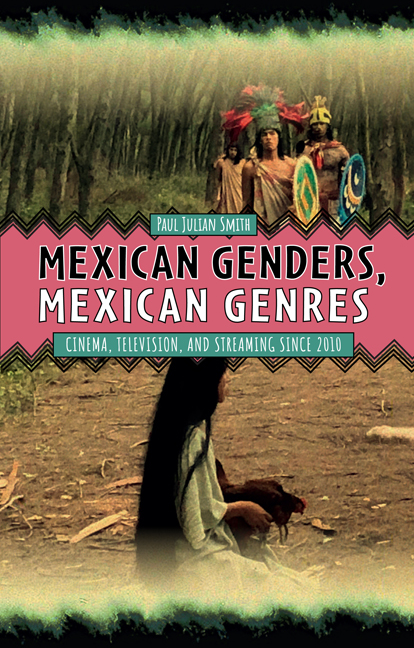Summary
The main focus of this book is popular or mass culture in contemporary Mexico, as expressed in fiction formats from the still distinct but rapidly converging audiovisual art forms of theatrically released cinema, free-to-air television, and streaming platforms. The book also pays attention to the social media footprint of the texts it studies. It thus continues a scholarly tradition of “calls for intermediality” in the Latin American mediascape (Ana López), but now in the new context of the late 2010s.
Mexican Genders, Mexican Genres analyzes both industries and practices, tracking how changes in producers and genres (for example, the relative decline of still hegemonic Televisa and of the heritage telenovela) coincide with changes in gender representations (for example, the relative rise of feminist and queer narratives across different media). These are examples of the new cultural dynamics facilitated by digital technologies, which the series Tamesis Studies in Popular Digital Cultures seeks to explore. In its corpus of primary texts this book also coincides with the popular culture brief of the series, aiming as it does to move beyond the art, auteur, or specialist film that is little seen by Mexicans at home but much studied by Mexicanists abroad.
It is striking that an excellent recent special journal issue entitled “Digital Changes in Latin American Cinemas” (Cerdán and Fernández Labayen), which intends to study both aesthetics and industry (production, distribution, and exhibition), restricts its analysis almost entirely to independent film and is heavily focused on the transnational theme that has long been a central focus for foreign Latin Americanists. Conversely, Niamh Thornton's monograph Tastemakers and Tastemaking: Mexico and Curated Screen Violence, forthcoming at the time of writing, promises to traverse normative boundaries between “high” and “low” media and address at least one telenovela.
This introduction offers a synopsis of Mexican Genders, Mexican Genres, sets out some of my sources for Mexican audiovisual ecology since 2010, and ends with a piece of reportage on media reception on the ground in Mexico City in early 2019. The first section, three chapters of the book proper, deals with cinema.
- Type
- Chapter
- Information
- Mexican Genders, Mexican GenresCinema, Television, and Streaming Since 2010, pp. 1 - 14Publisher: Boydell & BrewerPrint publication year: 2021

